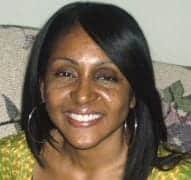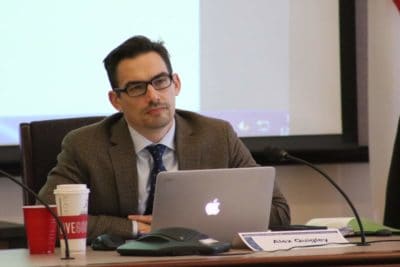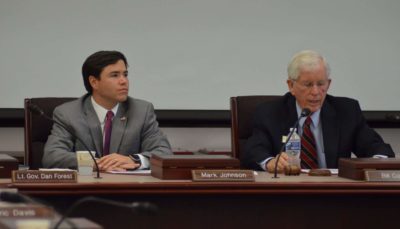I recently spent some time in one of my favorite eating spots. It always feels like a mini-adventure as I walk through the doors to explore. The thing that caught my attention this day was maroon and gray t-shirts, promoting my beloved alma mater, North Carolina Central University. As I continued to admire the t-shirts, something else caught my attention. I suddenly saw the items enchantingly displayed around the maroon and gray. It was a sea of Carolina blue. Suddenly, the minuscule offering of my Dear Old NCC was literally swallowed up, Tar Heel style. This prompted me to think about how education often forces some students to just fit in.
Immediately, the celebrated pile of NCCU Eagle T-shirts became a symbol of what has occurred in the history of education for students of color and those with learning differences. There are times when these students are tucked in between, to the extent of being obscured. It’s a history of “get in where you fit in.” An after thought.
The thing that caused me to take the proverbial trek up to my soap box was what the display could represent in terms of how our schools often fail to provide an equitable education for all students. How are we ensuring that schools are meeting the needs of all subgroups of students as opposed to providing a one-size-fits-all curriculum?
After spending more than 10 years of my teaching experience as a high school library media specialist, I had an opportunity to work with all grade levels at the school. I watched the creation of programs and curriculum that were more of “the catch of the day”, with little or no course offerings for the entire student population. Students were placed in courses just to be given an elective.
One such instance was an African-American student with no interest, skills, or ability to play an instrument being placed in a band course. I have observed and worked with students who were enrolled in the exceptional children’s program being put into standard courses, without the required modifications and accommodations indicated in their Individualized Educational Plan (IEP). These students were enrolled in courses without regard for their interests, learning styles, or instructional needs.
The absence of the purpose—learning—was seemingly taken out of the course offerings. This school was comprised of a majority of African-American and Hispanic students. This learning community was handed a magnet school program to fit the needs of the school district, not the student population. It became obvious. Just fit them in somewhere. They just need the credit and we need different types of students to attend this school. I watched students, who may not have been particularly excited about school, go from having little interest to no interest in coming to school at all. New courses, new rules, new uniforms, new teachers, but the same old adage: they will fit in somewhere.
Rev. Dr. Martin Luther King Jr. once said, “Our lives begin to end the day we become silent about things that matter.” This is my clarion cry. This type of one-size-fits-them teaching must end. As we transition from No Child Left Behind to the Every Student Succeeds (ESSA), how will we ensure that we are closing the skills gap that continues to vex us all? Could the gap be due in part to the lack of expectation, lack of exposure, and just plain “fitting in” mentality?
We must seize the opportunity to do just what ESSA entails. ESSA requires meaningful engagement from all stakeholders at the state and local level. Through ESSA, school districts, in partnership with teachers and parents, have more authority to set academic standards and educational policies to ensure that we have schools where every student is set up for success, not failure.
The online Guide to the Every Student Succeeds Act, published by the of the Center for Parent and Information Resources, sums up my final point: “The purpose of this title is to provide all children significant opportunity to receive a fair, equitable, and high-quality education, and to close educational achievement gaps.”
My challenge to all educators is to take time to study ESSA and hold our schools accountable for its implementation for the success of all students.





